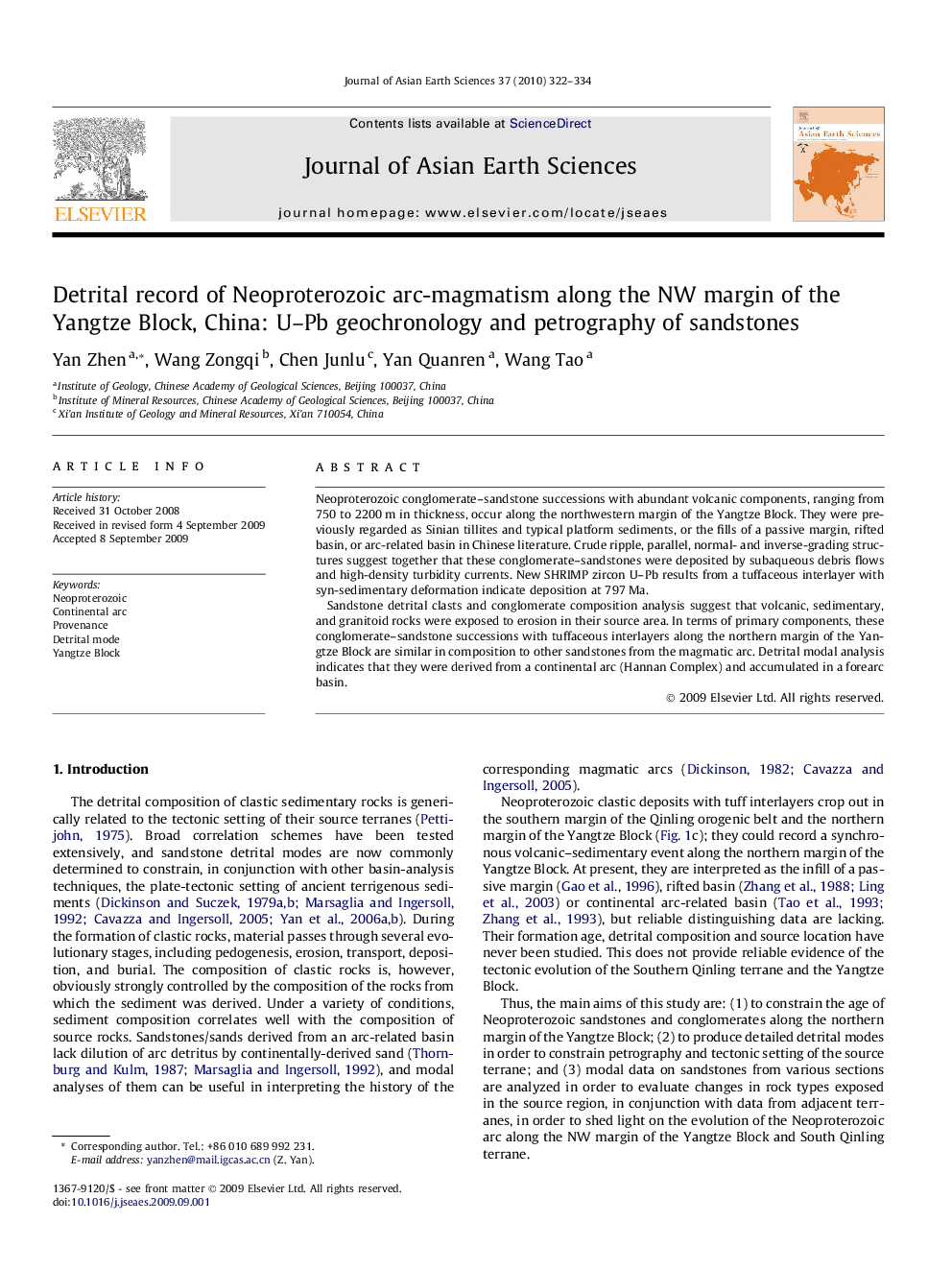| Article ID | Journal | Published Year | Pages | File Type |
|---|---|---|---|---|
| 4731994 | Journal of Asian Earth Sciences | 2010 | 13 Pages |
Neoproterozoic conglomerate–sandstone successions with abundant volcanic components, ranging from 750 to 2200 m in thickness, occur along the northwestern margin of the Yangtze Block. They were previously regarded as Sinian tillites and typical platform sediments, or the fills of a passive margin, rifted basin, or arc-related basin in Chinese literature. Crude ripple, parallel, normal- and inverse-grading structures suggest together that these conglomerate–sandstones were deposited by subaqueous debris flows and high-density turbidity currents. New SHRIMP zircon U–Pb results from a tuffaceous interlayer with syn-sedimentary deformation indicate deposition at 797 Ma.Sandstone detrital clasts and conglomerate composition analysis suggest that volcanic, sedimentary, and granitoid rocks were exposed to erosion in their source area. In terms of primary components, these conglomerate–sandstone successions with tuffaceous interlayers along the northern margin of the Yangtze Block are similar in composition to other sandstones from the magmatic arc. Detrital modal analysis indicates that they were derived from a continental arc (Hannan Complex) and accumulated in a forearc basin.
